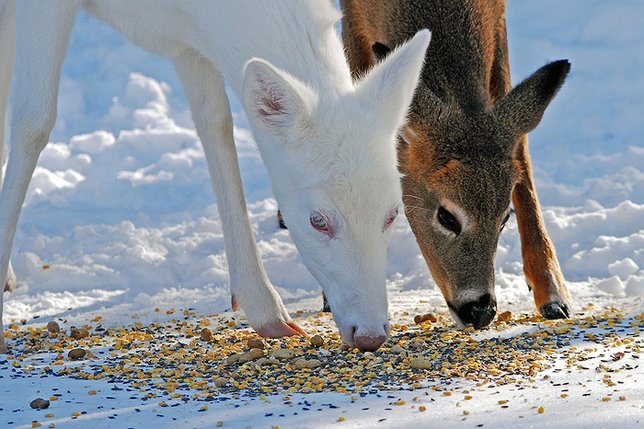During the winter, deer primarily rely on woody and evergreen vegetation (collectively known as woody browse) for their daily nutritional and metabolic needs. The digestive enzymes in a deer’s stomach change in the winter to better digest this browse. If deer are provided with unnatural food sources such as corn or hay after this change in diet has occurred it can result in deer becoming ill or even their death. Deer will attempt to utilize the unnatural food source, but can develop acidosis (i.e., grain overload disease) or enterotoxemia (i.e., Clostridium overgrowth) disease because they can’t digest the food properly. Both diseases occur acutely and can result in the rapid illness and death of deer in winter even though their stomachs are full.
Deer also congregate around food sources in winter which can increase the risk for disease transmission. For example, if a deer infected with chronic wasting disease (CWD) visits an artificial deer feeding site it will shed CWD prions in its saliva directly on the food, which can infect any other deer that feed from the same site. Congregations of deer around artificial feeding sites can also increase the risk for deer-vehicle collisions and deer related damage to landscape plantings, orchards, and tree farms. Inflated deer densities resulting from deer feeding can also exceed the carrying capacity of the surrounding habitat, resulting in wildlife habitat degradation.
Habitat improvement, especially the creation and promotion of early successional habitat, is the best way to ensure that deer and other species of wildlife have plenty to eat all year and avoids the negative consequences of deer feeding. Anyone interested in improving wildlife habitat on their property can contact their regional DEC deer or wildlife habitat management biologist. For a list of tree and shrub species that deer prefer to eat in winter and that you can promote on your property, visit DEC’s winter deer foods webpage.










